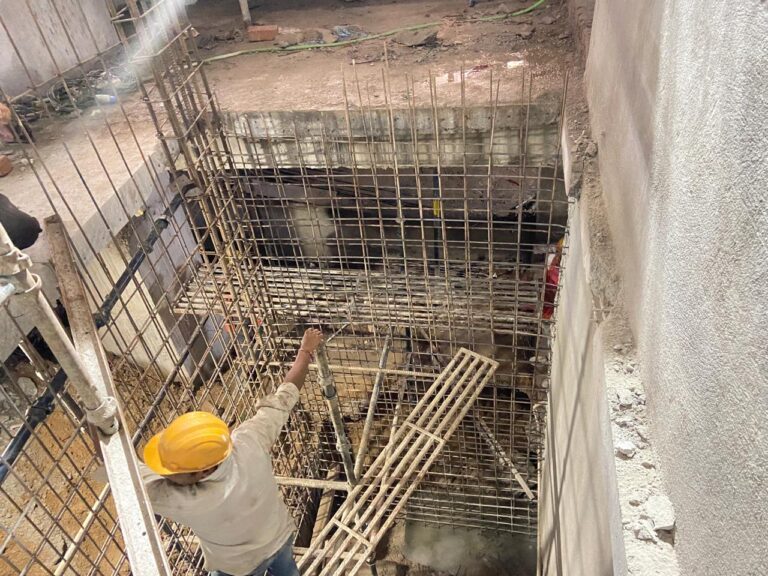Repair and Rehabilitation of RCC Bridges
Repair and Rehabilitation of RCC Bridges

Routine inspections along a critical highway corridor revealed multiple structural and functional distress across 52 bridge chainages. This included minor and major RCC bridges, road over bridges (ROBs), flyovers, vehicular underpasses (VUPs, LVUPs, PUPs), Box Culverts (BC), and High-Performance Concrete (HPC) structures. The distress ranged from minor surface damage to severe structural deficiencies — highting need for repair and rehabilitation intervention.
Structural distress was prominently observed in girders, piers, and abutments. These included reinforcement corrosion, cracking, inadequate cover concrete, damaged expansion joints, drainage inefficiencies, and wear-and-tear in parapet structures. One of the major bridges, comprising 32 spans, exhibited significant corrosion in end girders, along with loss of cover concrete. Left untreated, these conditions would have posed serious risks to safety, functionality, and long-term durability of the corridor.
Based on these findings, a comprehensive rehabilitation strategy was adopted using both conventional and advanced strengthening techniques.
Our Approach: Systematic Rehabilitation at Scale
Given the scale and complexity of the project, our team designed a multi-layered rehabilitation strategy tailored to each structure’s condition while ensuring consistency across all locations.
- Surface Repairs with PMM: Polymer-modified mortar (PMM) was applied in locations with surface cracks, minor spalling, and deteriorated concrete surfaces. The polymer-based formulation enhances bonding and provides long-term durability.
- Epoxy Grouting for Structural Cracks: High-strength, low-viscosity epoxy grout was used to fill and seal cracks in girders and other load-bearing members. The grout penetrates deeply to restore monolithic behavior and prevents further water ingress.
- V-Groove Cutting and Epoxy Putty Sealing: Cracks were chased using V-Groove cutting to facilitate the application of epoxy putty. This method ensures proper anchorage of the sealing material and restores structural integrity.
- CFRP Strengthening: Critically distressed end girders were first rehabilitated with additional rebars and micro-concreting. Carbon Fiber Reinforced Polymer (CFRP) laminates were then bonded to critical sections, followed by CFRP wrapping to improve flexural and shear strength. Access was made possible via suspended working platforms and scaffolding.
- Micro-Concreting: A pre-bagged, flowable micro-concrete was used to rebuild damaged girder sections. This helped re-establish the shape and strength of concrete members.
- Expansion Joint Replacement: Strip-seal expansion joints replaced deteriorated ones, ensuring watertight performance and accommodating movements. The process included removal of old joints, deck surface preparation, and placement of new joint systems for thermal and vehicular movement compatibility.
- Crash Barrier and Parapet Rehabilitation: In selected locations, crash barriers were raised to meet the IRC guidelines. Concrete parapet walls were extended and rehabilitated for enhanced safety.
- Drainage Improvements: Fixing of GI pipe draining spouts, extension below slab soffits, installation of top grating plates, laying of stone pitching over prepared filter media along slopes, placement of PCC (M15) below curtain walls, and restoration using M20 concrete at damaged or missing areas was also conducted to improve water discharge and reduce risks of water-induced damage.
Traffic Management and Safety
Executing rehabilitation across multiple operational bridges demanded meticulous planning including traffic management:
- Traffic Speed Controls: Traffic speed limit was reduced to 40 kmph during CFRP work on girders.
- Diversions and Barricading: During expansion joint replacement, partial traffic diversions were enforced with barricading and signages.
- Worker Safety Protocols: Safety of workmen was prioritized through provision of PPEs, tool-box talks, and platform safety checks.
Quality Assurance and Compliance
We implemented strict quality control protocols at every stage of the rehabilitation process. This included:
- Continuous inspection and material testing.
- Pre-approval of repair methodologies.
- On-site QA/QC documentation.
- Supervision of workmanship and curing processes.
- Final verification through site inspections and client validation.
These ensured that all works complied with applicable codes and specifications.
Project Outcome
The rehabilitation process was successfully executed across all 52 chainages, meeting all technical requirements and safety standards. Structural integrity was restored, functional performance was improved, and durability extended. Post-repair evaluations confirmed the effectiveness of the adopted techniques. The project has resulted in safer, more reliable transportation infrastructure.
This large-scale project demonstrates NVLN’s expertise in complex, multi-location bridge rehabilitation services. By integrating conventional and advanced methods, we delivered lasting, cost-effective solutions that improved safety, extended service life, and supported regional infrastructure growth.


